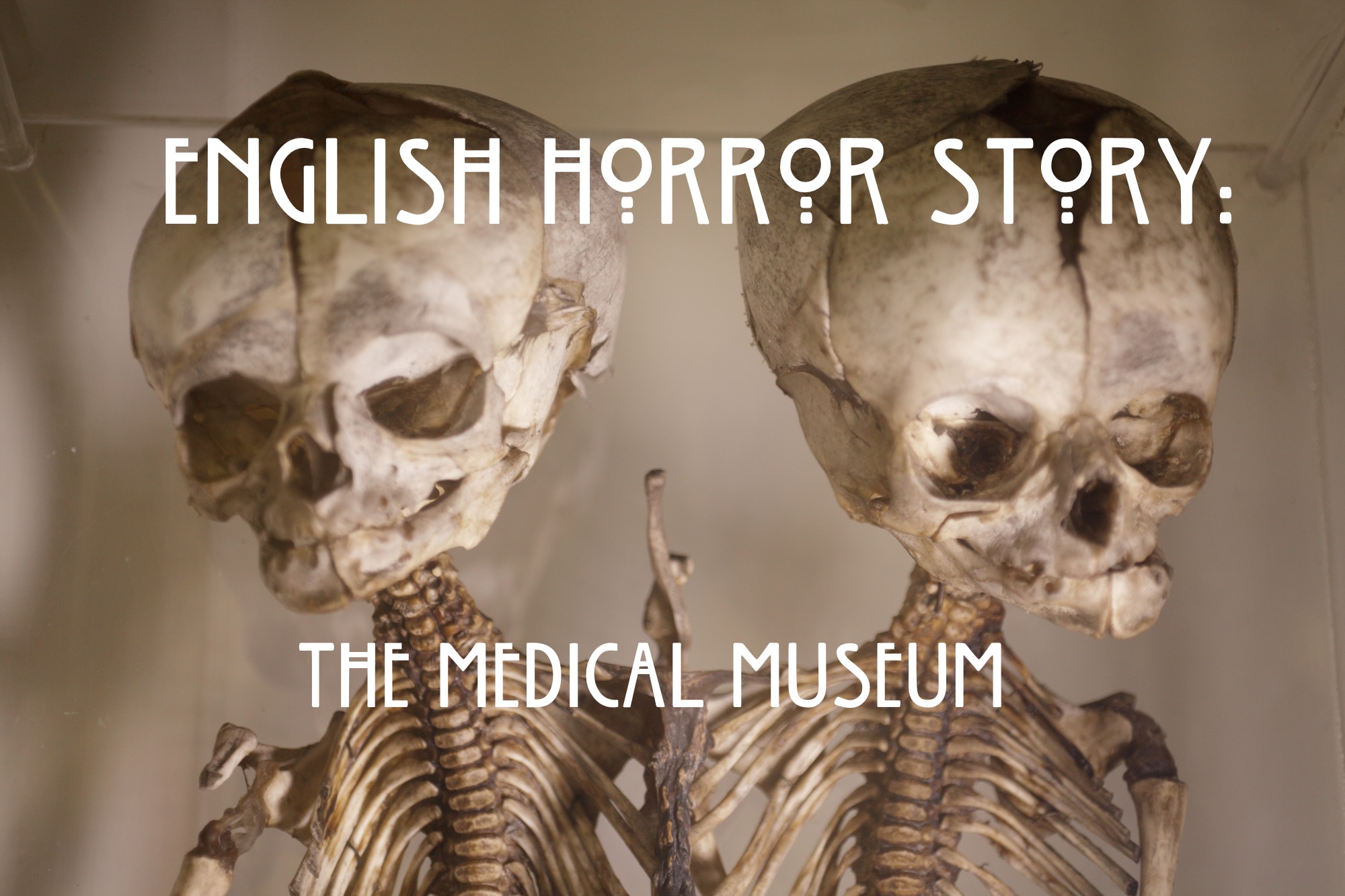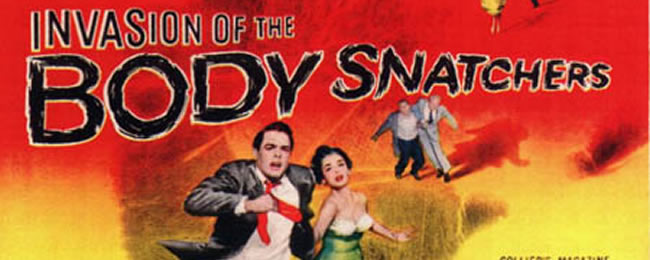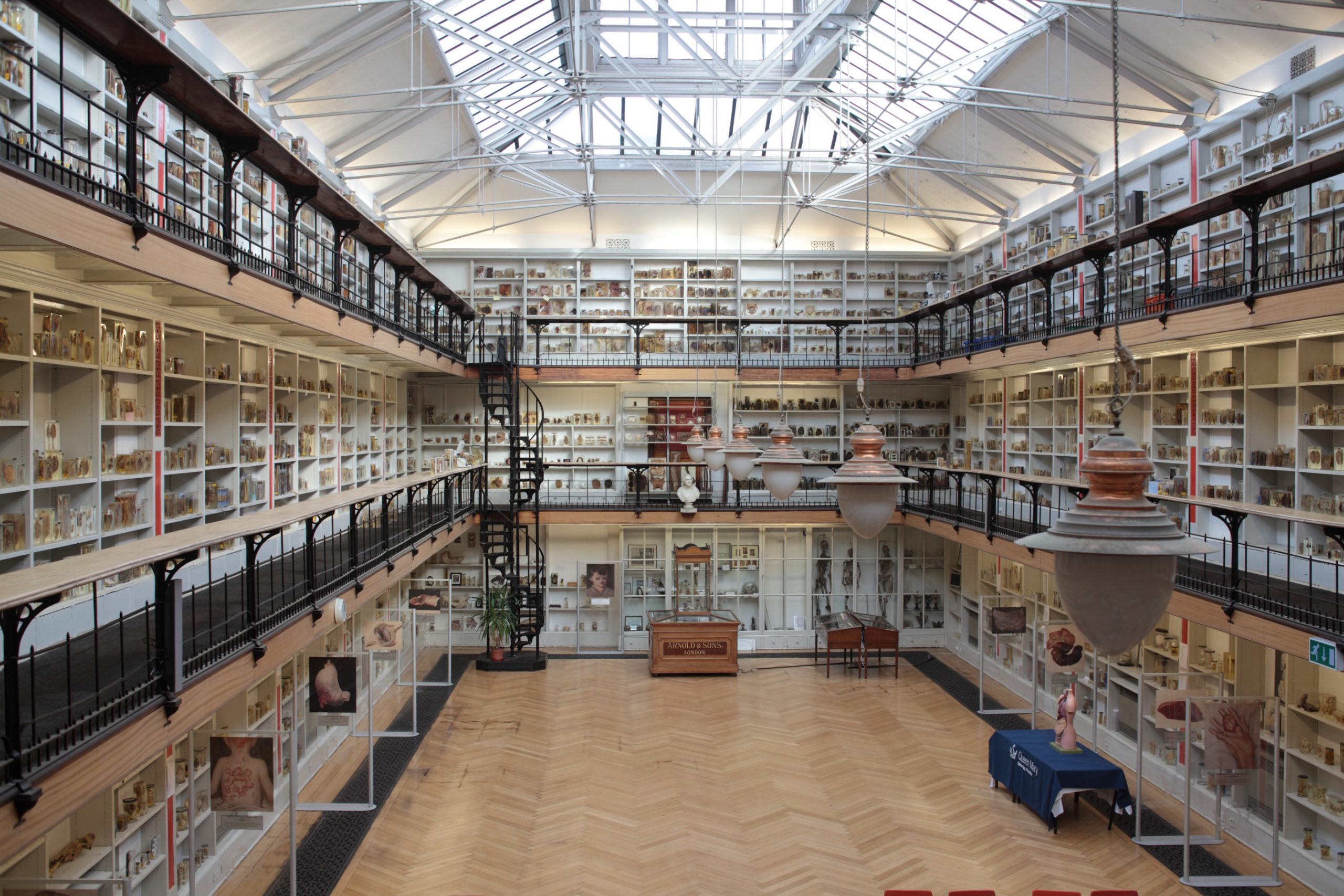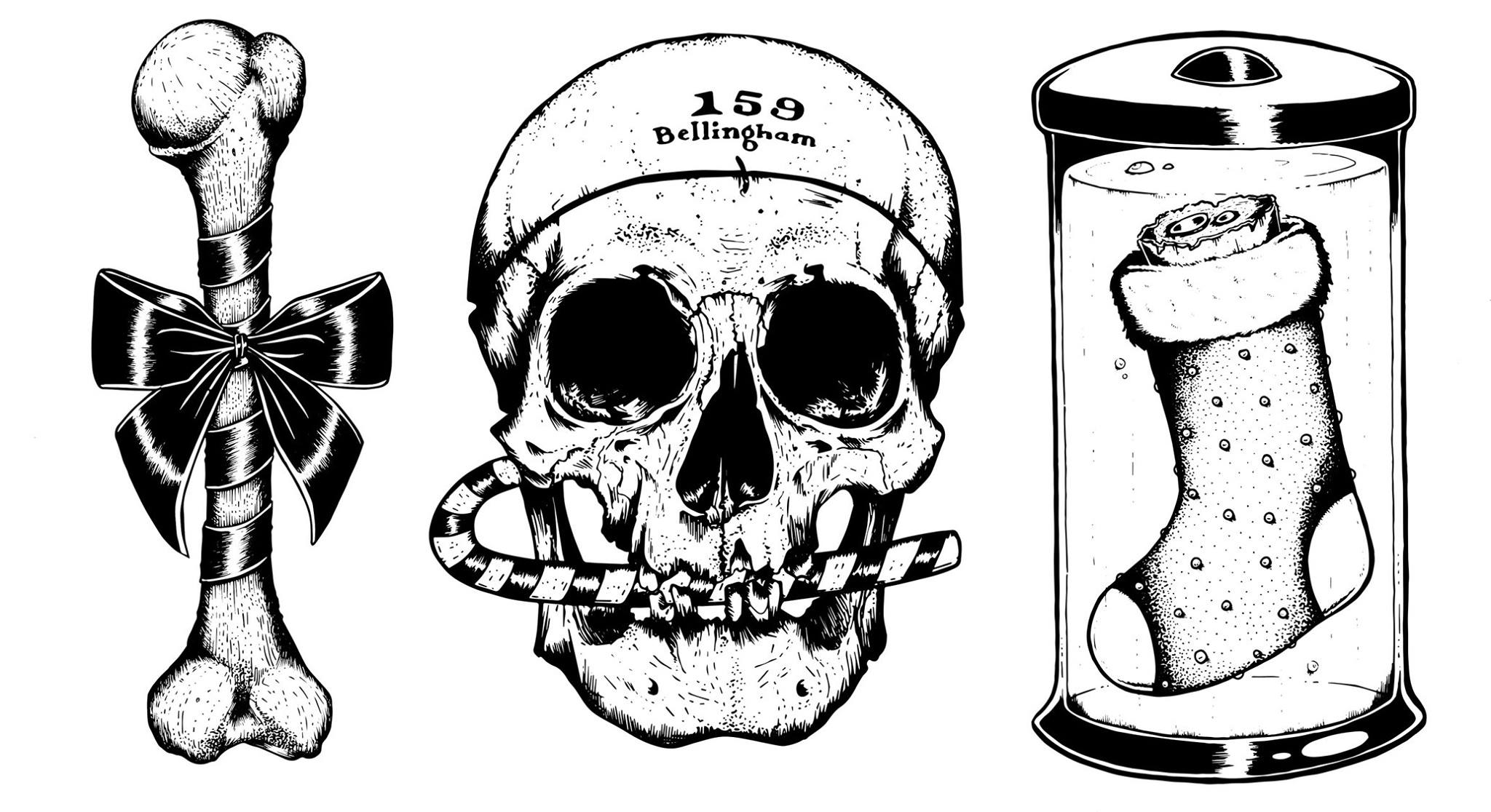
A Brief Introduction
The most recent series of American Horror Story: Freakshow, has been particularly interesting to me as the technical curator of a medical museum in the UK, as well as a fan of the show. In the series two reprehensible characters, “Dr Sylvester Mansfield” and “Miss Rothschild” (Dennis O’Hare and Emma Roberts) attempt to make a living by providing the remains of deceased ‘freaks’ to a museum not unlike my own, loosely based on the famous Mutter Museum in Philadelphia. In order to satisfy the public’s desire for the spectacular display of conjoined twins, deformed adults and more, these two unscrupulous individuals head to a rare but still active freak show in order to murder a few of the hapless ‘performers’ and sell the remains to the curator of the museum in the City for thousands of dollars.
This doesn’t happen in medical museums, particularly in the UK, due to a very stringent set of guidelines provided by a regulatory body: The Human Tissue Authority (or HTA). I can’t really speak for museums at the beginning of the century (as they were unregulated) and it’s common knowledge that anatomy, like many other sciences, has a rather murky past which includes grave robbing and vivisection. However, since 2005 when the HTA was created anything of that sort, if it ever existed, was relegated to the thankfully distant, gruesome past.

So why do we have the HTA in the UK when it doesn’t exist elsewhere? It’s because in the 1990s there was a very public outcry about the retention of organs and complete bodies of babies and foetuses uncovered in some UK hospitals (in Birmingham, Bristol and Liverpool). Consent wasn’t given by the parents for this to happen – it simply wasn’t assumed doctors needed to ask for it in those days which was perhaps protection, condescension, or even arrogance – and these parents lobbied the government to form a regulatory body to ensure the practice didn’t continue. It didn’t help that some of these more innocent organ retentions were mixed up in the press with the unethical activities of the sinister sounding Professor Dick van Velzen (at Alder Hey Hospital in Liverpool, my home town) and newspaper headlines seized the opportunity to terrify the public with headlines which harked back to the Victorian era such as “Return of the Bodysnatchers!” and “Ghoulish Malpractice!”
 My friend Anna Dhody of Philadelphia’s Mutter Museum recently told me “We do not have anything like the HTA here in the US. Regulations of this kind are done on the state level and the same was true for our Anatomy Acts in the 1800s. We had no country wide Anatomy Act the way the UK did, but some states did pass them…eventually.”
My friend Anna Dhody of Philadelphia’s Mutter Museum recently told me “We do not have anything like the HTA here in the US. Regulations of this kind are done on the state level and the same was true for our Anatomy Acts in the 1800s. We had no country wide Anatomy Act the way the UK did, but some states did pass them…eventually.”
The HTA now governs several different aspects of human tissue usage in the UK: anatomy (dissection in medical schools), post-mortems (autopsy), research, transplant and public display (museums and exhibitions). Having worked within all these areas over the course of my career, the rules and rationale are as familiar to me as the wit of Oscar Wilde, so I’m constantly surprised when others have no idea what I’m talking about when I mention the HTA. The questions often arrive when visitors to the museum ask, ‘Why can’t we go to the upper levels?’ (more on why they can’t in a moment). But of course it’s not clear to most people who haven’t been immersed in death regulations and ethics for their whole adult lives.

So, how to proceed?

I’m a long-time admirer of The Mutter Museum’s most well-known curator Gretchen Worden, and I’m privileged to be traveling a similar path at Barts Pathology Museum. Our annual visitor numbers have grown from 0 to around 15,000 in the three years I’ve been in my post (despite us only opening for a smattering of evening and weekend events), and we are now creating membership packages as well as merchandise to help with the funding of the museum: posters, tote bags, pens, mugs and more recently these wonderful greetings cards for Christmas via my friend Lozzy Bones!
But the path hasn’t been an easy one. Due to HTA regulations insisting that in the UK the general public cannot see specimens younger than 100 years old without a Public Display Licence I had to re-organise the whole museum as I repaired and recorded all 5,000 anatomical specimens. Now, on the open plan ground floor, all the potted specimens from the deceased are at least 100 years old. That way, the general public can enter the building and browse those specimens, they just can’t ascend the spiral staircase at the back and see the younger pots on the upper two levels up close – it’s a restricted area. That will be set to change in the new year: the best Christmas gift we could have hoped for was the funding to apply for a Public Display Licence which we received from The Medical College of Saint Bartholomew’s Hospital Trust, a registered charity that promotes and advances medical and dental education and research at Barts and The London School of Medicine and Dentistry. We then very recently passed the stringent audits and inspections required for the HTA to actually grant us permission to have the licence.
So things are looking up and in the New Year we can open the second floor to the general public. In the meantime I make the most out of the current situation by informally presenting the specimens which can’t be seen physically (but can be seen via video or photograph as the HTA doesn’t regulate images, only the actual remains) on my YouTube channel’s “A Potted History Of…” play list.
However, there is still a sense of horror and fear in the UK at the retention and display of specimens of deceased babies in particular, and even when they’re over 100 years old, or simply drawn in pen or pencil, they remain truly controversial. For example, our recent attempt at the poster below caused the HTA to advise us to remove the three foetal specimens, labelled:
 This is despite the fact that these are drawings (not the actual specimens or even photographs) and they are of specimens over 100 years old. This illustrates that it just isn’t as clear cut as it should be, even with the regulations in place, and it’s even been suggested I put a warning sticker on some specimens. Of course we medical museums do have a responsibility to the public – we need to ensure visitors don’t leave traumatised! But at the same time, there is something to be said for people being made fully aware of that possibility before they enter a medical museum, regardless of which specimens they see. It’s not for me to say what is ‘more’ or ‘less’ disturbing – I believe it’s too subjective. If I was to label only those pots I thought were disturbing I’d be repeating practices in 19th and early 20th Century anatomy museums and peripatetic curiosity shows which hid their titillating specimens behind velvet curtains. To me that seems counterproductive as they become more titillating, and perhaps the only ones the public would want to see!
This is despite the fact that these are drawings (not the actual specimens or even photographs) and they are of specimens over 100 years old. This illustrates that it just isn’t as clear cut as it should be, even with the regulations in place, and it’s even been suggested I put a warning sticker on some specimens. Of course we medical museums do have a responsibility to the public – we need to ensure visitors don’t leave traumatised! But at the same time, there is something to be said for people being made fully aware of that possibility before they enter a medical museum, regardless of which specimens they see. It’s not for me to say what is ‘more’ or ‘less’ disturbing – I believe it’s too subjective. If I was to label only those pots I thought were disturbing I’d be repeating practices in 19th and early 20th Century anatomy museums and peripatetic curiosity shows which hid their titillating specimens behind velvet curtains. To me that seems counterproductive as they become more titillating, and perhaps the only ones the public would want to see!
To facilitate an objective UK wide discussion about these particular specimens I have been working with staff at UCL Pathology Collections and medical illustrator/researcher Dr Lucy Lyons after we were awarded funding for a project entitled Drawing Parallels: Artistic Encounters With Pathology. The purpose of these “slow-looking” drawing and discussion workshops is to get to the root of what it is that makes people feel so uncomfortable about some remains compared to others: old vs. young, skeletal vs. soft tissue etc. The results so far have been fascinating and will appear in a future paper.
 The above illustrates that in the UK the desire to engage the public with these wonderful and valuable specimens requires tact, responsibility, tenacity and the ability to think outside the box. In an alarmingly familiar MO to mine Gretchen Worden was said to display “a mischievous glee as she frightened David Letterman with human hairballs and wicked-looking Victorian surgical tools, only to disarm him with her antic laugh.” I hope I achieved the same when I was recently on the UK’s Alan Titchmarsh Show with tapeworms, a syphilitic skull, slices of liver and a hand with leprosy.
The above illustrates that in the UK the desire to engage the public with these wonderful and valuable specimens requires tact, responsibility, tenacity and the ability to think outside the box. In an alarmingly familiar MO to mine Gretchen Worden was said to display “a mischievous glee as she frightened David Letterman with human hairballs and wicked-looking Victorian surgical tools, only to disarm him with her antic laugh.” I hope I achieved the same when I was recently on the UK’s Alan Titchmarsh Show with tapeworms, a syphilitic skull, slices of liver and a hand with leprosy.
Conclusion
My aim with this article is not to paint the HTA as some sort of Victorian ‘Society for the Suppression of Vice’ because the simple fact is we need regulations when it comes to contentious materials. It has been said that any civilised society is measured by how it treats its dead [1] and this is why HTA inspections are imperative. Recently a story focused on 100 brains which went missing from the University of Texas – under HTA governance this would be an absolute scandal in the UK and staff responsible for the remains would face up to three years in prison.
Of course the UK and the US has much in common when it comes to other human remains, for example in the funeral industry: embalmers, funeral directors and pathologists need to be regulated too. The same goes for careers such as Anatomical Pathology Technology: ‘morticians’ like me who are certified by the RSPH and affiliated with the AAPTUK. This ensures that those who simply take a fancy to something like embalming can’t just pick up a trocar and a box of Dodge cosmetics and get to work. (However, one scandalous US case which illustrates the state-wide inconsistencies in post-mortem regulations is that of Shawn Parcells, the ‘forensic expert’ in the Michael brown case. This shocking lack of formal training is utterly illegal in the UK and this simply would not happen here.) Currently there is a growing death-positive movement in the Western world (“About time” says the dormant goth in me who’s been dying to make herself known) and this is of course a good thing when it pushes the general public to question the end-of-life care of relatives, to not be taken advantage of by unscrupulous undertakers at a difficult time and instead do their research, or to really live every day to the full by being aware of their own mortality. But it can’t make experts of us all and there is a danger for those unregulated professionals to use the topic’s popularity to their advantage (just like the 19th Century quacks who were instrumental in the closure of anatomical museums many years ago [2]) I’ve heard some fuzzy logic from those dilettantes who dip their toes into the murky waters of death which, even those of us who have ‘earned a chart’, find difficult to navigate (as I’ve tried to illustrate, above). I’ve heard the reason “Well we all die, therefore we all have expertise in the topic and have a right to say so.” Unfortunately one can no-more use that logic than one can say “We were all born – let’s all now be midwives. Someone pass me the hot, wet towel and the kitchen scales while I get to work!”

So we need regulations as much as they make life a bit more difficult. We need to make sure that in return for the wonderful gifts bestowed to us in our incredible museums or dissection rooms we promote dignity and respect, at the same time as trying to somehow make the specimens relevant and interesting. One article said: “Ms. Worden used humour and charm to ease viewers past the initial gawking or revulsion the museum’s collection might trigger. There was a serious message behind her sometimes madcap affect: that the human body is not to be feared or loathed, even when horrifically damaged or monstrously distorted.”
Similar to Gretchen Worden I feel like I have to come at the issue with two different heads on: one professional, qualified and driven – attempting to educate and promote the value of these specimens for future generations. The other passionate, curious and irreverent – attempting to tie the specimens in with popular culture and engage the public. In other words, I feel like THIS!

Refs:
[1] “The Treatment of Human Remains”, K. S. Satyapal. South African Journal of Bioethics and Law, June 2012, Vol. 5, No.1
[2] “Indecent and Demoralising Representations”: Public Anatomy Museums in mid-Victorian England, A. W. Bates, Medical History, Jan 2008, Vol. 52, No. 1
